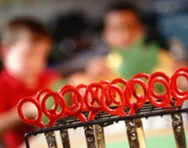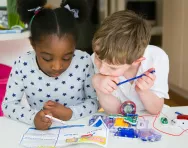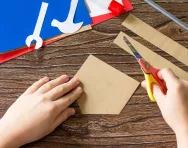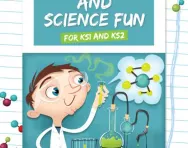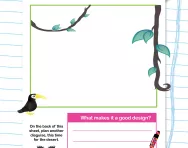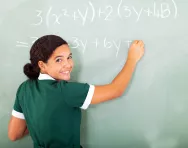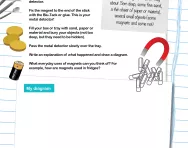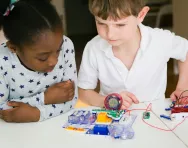Important update from TheSchoolRun
For the past 13 years, TheSchoolRun has been run by a small team of mums working from home, dedicated to providing quality educational resources to primary school parents. Unfortunately, rising supplier costs and falling revenue have made it impossible for us to continue operating, and we’ve had to make the difficult decision to close. The good news: We’ve arranged for another educational provider to take over many of our resources. These will be hosted on a new portal, where the content will be updated and expanded to support your child’s learning.
What this means for subscribers:
- Your subscription is still active, and for now, you can keep using the website as normal — just log in with your usual details to access all our articles and resources*.
- In a few months, all resources will move to the new portal. You’ll continue to have access there until your subscription ends. We’ll send you full details nearer the time.
- As a thank you for your support, we’ll also be sending you 16 primary school eBooks (worth £108.84) to download and keep.
A few changes to be aware of:
- The Learning Journey weekly email has ended, but your child’s plan will still be updated on your dashboard each Monday. Just log in to see the recommended worksheets.
- The 11+ weekly emails have now ended. We sent you all the remaining emails in the series at the end of March — please check your inbox (and spam folder) if you haven’t seen them. You can also follow the full programme here: 11+ Learning Journey.
If you have any questions, please contact us at [email protected]. Thank you for being part of our journey it’s been a privilege to support your family’s learning.
*If you need to reset your password, it will still work as usual. Please check your spam folder if the reset email doesn’t appear in your inbox.
5 at-home design and technology projects for primary children
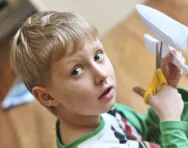
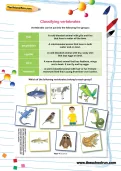
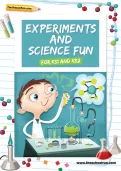
Download Fantastic Science Resources Today!
- Experiments And Science Fun pack
- Science Learning Programme for each school year
- All the instructions, questions and information you need
Design and make models
Age range: EYFS
What you do: Explain to your child that they are going to build a house using boxes and other materials. First though, they need to design the house. Explain that before a house can be built, an architect has to draw what is to be built. They are to be architects! Let them draw the house then build their design. (If they’re using cereal boxes, turn them inside out if they want to paint them, that way the paint will stick.) Afterwards ask them what they like or dislike about the end result.
They're learning about... Drawing and making models and reflecting on their work.
At school they might… Do model building as part of free play time. (Early Years classes need to be stocked up with materials to use for modelling, so keep cardboard packaging and offer it to the class teacher!) As part of D&T they will experiment with different textures and shapes and try combining different materials.
Make a money box
Age range: EYFS and KS1
What you do: You’ll need a box or can which you can make a slot in at the top for the money to go in. Together, decide how to create a flap through which the money box can be opened. Your child can then choose from paints, collage materials, pastels, etc. to decorate their money box.
They're learning about... Collecting, assembling and combining materials.
At school they might… Make other forms of packaging (for example, lots of schools have children design and make a bag).
'Cook' granola yoghurt pots
Age range: KS1
What you do: Choose a recipe to use – there are lots online. Prior to cooking discuss what your child needs to do (tie long hair back, wash hands, put on an apron). Then talk about what you’re going to make, explaining why it's a healthy choice for breakfast or dessert. Look through the recipe together, modelling the reading carefully for your child before you follow each instruction. Afterwards discuss what cooking skills they’ve used (stirring, squishing, breaking, greasing, etc.). Eat, enjoy and discuss what has worked or not in the recipe, or what changes you might make to personalise it for your family.
They're learning about... Food hygiene, cooking skills.
At school they might… Do other cooking projects like baking cakes. Often cooking will be linked in with other topic work, such as Easter cakes or vegetable soup for Harvest Festival.
Make an egg cosy
Age range: KS2
What you do: Help your child choose a piece of fabric, then cut out two semi-oval shapes (two different fabrics can work nicely). They’ll need to use an egg to help them measure their fabric shapes, then sew them together, leaving a hole at the bottom where the egg goes.
They're learning about... Measuring, marking out, cutting and shaping a range of materials, and assembling, joining and combining components and materials accurately.
At school they might… Work on other textile projects as well as practising different stitch types.
Design a boat
Age range: KS2
What you do: Select and look at pictures of boats. Search the internet together; look at different designs for various purposes. Encourage your child to look at the materials that are used for building boats, any pulley systems and sails. Ask them to design a boat for a specific purpose (travelling, fishing, exploring), thinking carefully about the materials they would use, the way the boat would travel and how many people would be able to travel in it.
They're learning about... Generating ideas for products after thinking about who will use them and what they will be used for.
At school they might… Do something similar but also actually construct the boat out of wood and other materials. They might use electrical circuiting techniques and design pulley systems.
Design and technology curriculum changes in 2014
In 2014 there will be changes brought in to all areas of the national curriculum. These changes, broadly speaking, are designed to give schools and teachers more freedom and independence, so some of the objectives and assessments will be more free-flowing and less rigid.
For Design & Technology the new curriculum is said to link the subject more to innovation and digital industries. Critics say the changes threaten to inhibit the creative side of the subject in favour of more rigour and structured work. Pupils will learn about 3D robotics and other IT-related concepts as well as the more traditional elements of the subject.
